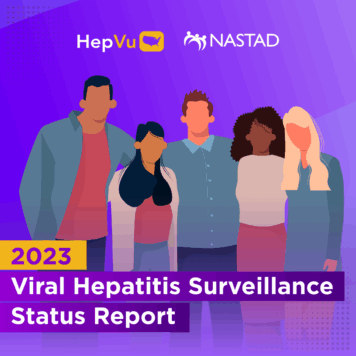Selected and summarized by Ronald O. Valdiserri, MD, MPH, Professor, Department of Epidemiology, Rollins School of Public Health, Emory University, and Co-Chair of HepVu.
Dr. Valdiserri reviews significant articles on prevention, public health, and policy advances in viral hepatitis. This month, he highlights “Decrease in Hepatitis C Testing and Treatment During the COVID-19 Pandemic” Authored by Kaufman HW, Bull-Otterson L, Meyer WA, Huang X, Doshani M, et al. American Journal of Preventive Medicine, September 2021 vol 61(3): 369–376.
What question(s) does this study address?
The U.S. Centers for Disease Control and Prevention (CDC) estimates that 2.4 million Americans are living with Hepatitis C infection and that as many as 4 in 10 people are unaware of their infection. Without knowledge of their diagnosis, these persons are unable to take advantage of current oral treatments that can cure Hepatitis C. To add to this problem, the onset of the coronavirus pandemic in late 2019 (COVID 19) has caused major disruptions in the delivery of medical care and clinical preventive services due to stay-in-place orders and the redirection of public health and medical resources to address the ongoing pandemic. A recent simulation model of the long-term impact of COVID 19 on Hepatitis C outcomes in the U.S. predicted fewer identified Hepatitis C infections and additional cases of cirrhosis and liver-related deaths as a result of pandemic disruptions. The current study used data from a large national clinical laboratory and from national estimates of dispensed prescriptions (the IQVIA National Prescription Data Base) to determine the impact of the COVID-19 pandemic on Hepatitis C testing and treatment. Investigators compared Hepatitis C testing volume and Hepatitis C treatment prescription fills in 2020 to comparable time periods in 2018 and 2019.
What are the major findings of this report/article?
- The analysis included over 12 million Hepatitis C antibody test results and 326,603 Hepatitis C RNA test results.
- Comparing Hepatitis C testing volumes from March through July for 2018, 2019 and 2020, the investigators found a statistically significant decline in Hepatitis C antibody testing during the pandemic. The lowest levels of Hepatitis C antibody testing were observed in April 2020—when the testing volume decreased 65.6% compared to the same period in 2018 and 2019.
- Hepatitis C RNA-positive test results also experienced a statistically significant decline during the pandemic, falling by 62% in March 2020.
- The IQVIA data base is estimated to cover 92% of all outpatient retail prescription fills and 78% of all mail-order fills in the U.S. Looking at Hepatitis C treatment prescription fills from January 2018 to July 2020, this analysis found that prescription fills decreased 43% in May 2020, 37% in June 2020, and 38% in July 2020 compared to the corresponding months in 2018 and 2019.
What are the implications for the prevention and control of viral hepatitis?
- Reductions in Hepatitis C testing and in Hepatitis C treatment during the COVID-19 pandemic have the potential to increase Hepatitis C-associated morbidity and mortality as well as increase Hepatitis C transmission (i.e., undiagnosed persons and those who have not been treated and cured of their infection may continue to spread the virus).
- While the level of Hepatitis C antibody testing appeared to approach pre-pandemic levels by late July 2020, Hepatitis C antibody-positive results, Hepatitis C RNA-positive results, and Hepatitis C prescription fills continued to be low compared to 2018 and 2019 levels. As such, efforts to achieve Hepatitis C elimination through early diagnosis and widespread treatment must be redoubled in light of the ongoing COVID pandemic.
- Data on race/ethnicity were not available for this analysis. However, disruptions in Hepatitis C prevention, diagnosis, and treatment resulting from the COVID pandemic have the potential to further widen racial/ethnic disparities.




